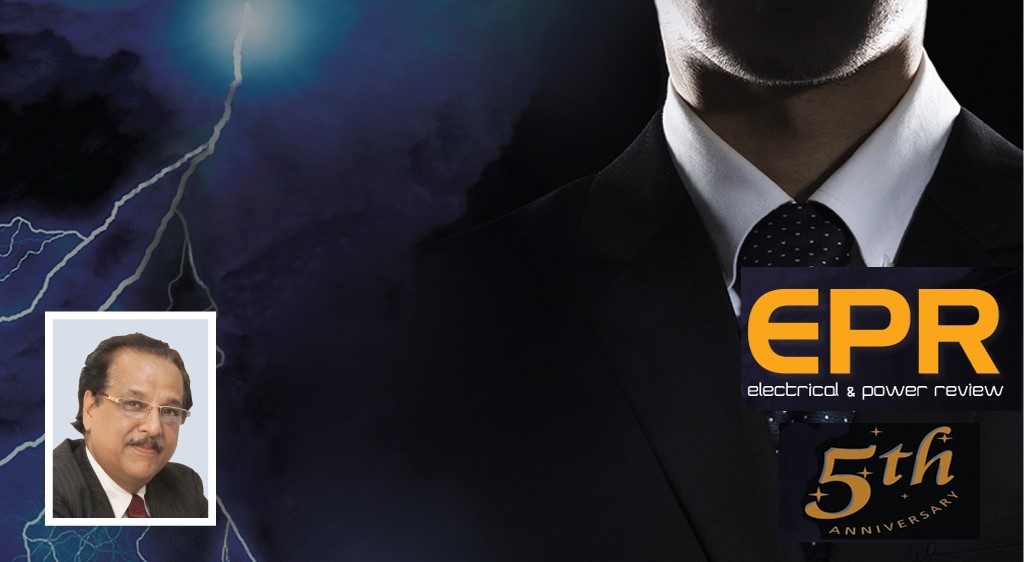‘Power for All’ to ensure electricity access
By EPR Magazine Editorial November 28, 2017 4:24 pm IST
By EPR Magazine Editorial November 28, 2017 4:24 pm IST

Rajesh K Mediratta, Director (BD), Indian Energy Exchange (IEX)
The power sector has witnessed very positive development in terms of new capacity additions in the recent past. The coal production improved and generally there was very less or insignificant power shortages faced by the discoms to meet their demand. This has kept spot market prices low at Rs 2.80/kWh, says Rajesh K Mediratta, Director (BD), Indian Energy Exchange (IEX).
The government pushed for strengthening of transmission corridors across West-South and West-North regions. Major HVDC link for west-north of Champa-Kuruchhetra was added and in South, 765kV Wardha-Nizamabad lines were added facilitating cheaper power from East-Western regions to flow to deficit regions. Day-ahead market volume loss due to transmission congestion reduced to less than 1 per cent in the first half of FY 18 against 4 per cent in the last fiscal. This also facilitated cheaper power to South and North regions with much lower price differential of about than 15 paise per unit as compared to that in Western Region.
He informs, “Village electrification also was pursued with zeal and rigor. Ministry has set target for complete electrification of about 18,000 villages by end of 2018 out of which 13,511 villages have already been electrified that is 75 per cent of the target has been achieved as on 19th May 2017. This is expected to take us closer to the mission of ‘Power for All’ by 2020.”
Government philosophy to allow procurement of power whether its renewable or conventional only through competitive bidding achieved savings in overall cost of power to end consumers. Competitive bidding for procurement of wind generation was tried for first time. The bids received for wind was lowest at Rs 3.46. Solar bidding continued to reduce and touched another record low of Rs 2.44. Similarly, conventional power in short term can only be procured either through e-auction or power exchanges. Both have given most competitive prices for the discoms and consequently to end consumers. This has also resulted in lower increase in tariffs of the discoms.
Mediratta says, “On the distribution side, the launch of UDAY scheme is expected to bring respite to the financially ailing discoms. With states issuing UDAY bonds worth approximately Rs 2.32 trillion as of August 2017, it is expected that distribution companies’ financial health will improve owing to a reduced interest burden after transfer of debt to their respective state governments. UDAY envisages distribution companies to reduce their AT&C (Aggregate Technical and Commercial) losses to less than 15 per cent by the financial year 2019.This is expected to ease the financial stress and improve their power off take ability. The Scheme is expected to push the distribution companies and States to ensure loss reduction. Moreover, under UDAY, States and the Centre are expected to take steps to reduce cost of power for distribution companies.”
‘Power for All’
According to Mediratta, the particular initiative that will change the game in 2017 or now we can say in 2018 is ‘24×7 Power for All’. Such initiative will expand the consumer base ensuring better access to electricity by marginal section of society and remote urban and rural villages enhancing overall demand. This will also increase PLF of generation capacity and mitigate stranding of generating assets. UDAY will ensure better revenues for discoms.
Changes to improve industry’s health
As per Mediratta major changes in the industry resulting in improvement in the health of discoms are:
We use cookies to personalize your experience. By continuing to visit this website you agree to our Terms & Conditions, Privacy Policy and Cookie Policy.